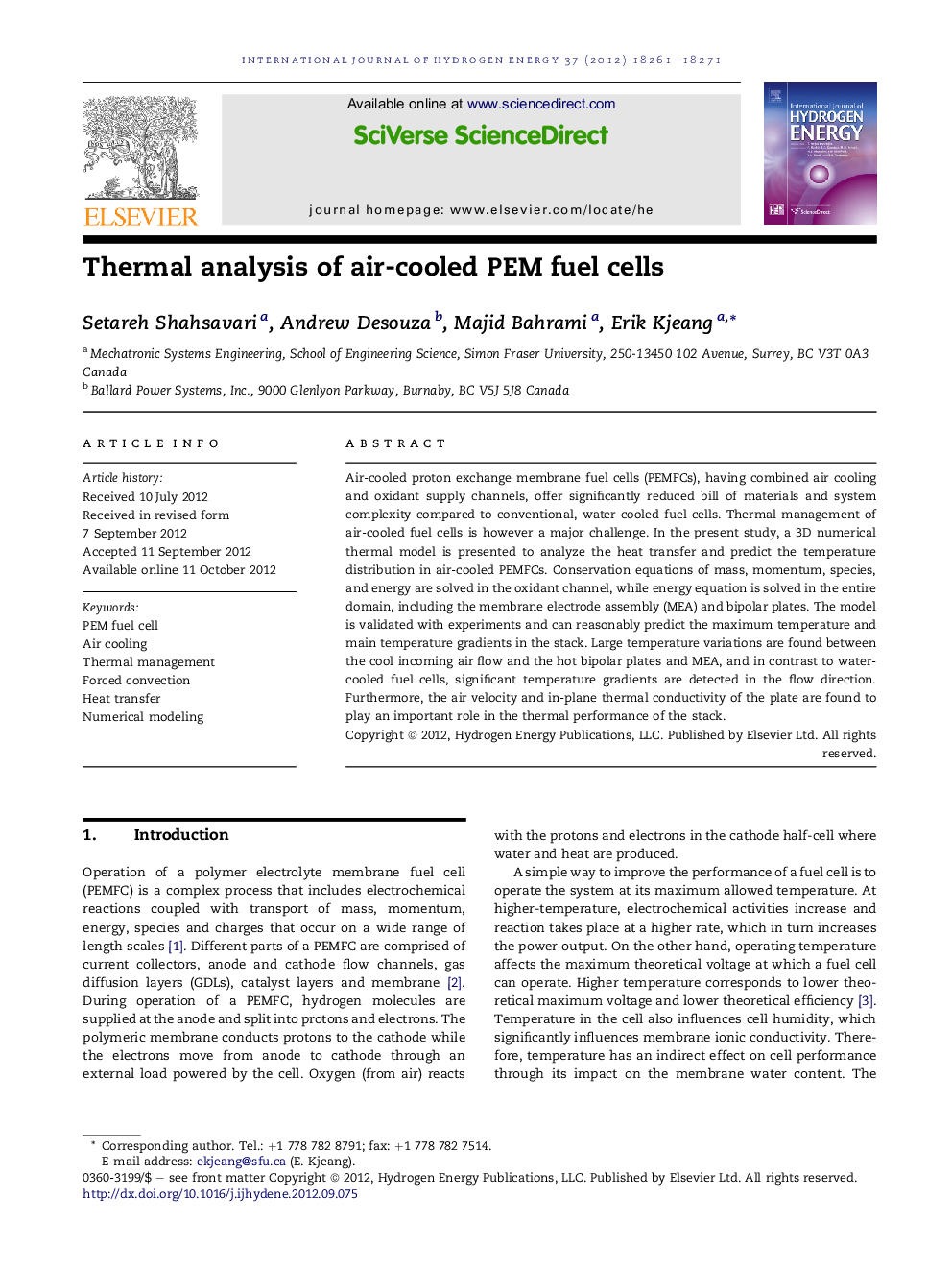| Article ID | Journal | Published Year | Pages | File Type |
|---|---|---|---|---|
| 1278343 | International Journal of Hydrogen Energy | 2012 | 11 Pages |
Air-cooled proton exchange membrane fuel cells (PEMFCs), having combined air cooling and oxidant supply channels, offer significantly reduced bill of materials and system complexity compared to conventional, water-cooled fuel cells. Thermal management of air-cooled fuel cells is however a major challenge. In the present study, a 3D numerical thermal model is presented to analyze the heat transfer and predict the temperature distribution in air-cooled PEMFCs. Conservation equations of mass, momentum, species, and energy are solved in the oxidant channel, while energy equation is solved in the entire domain, including the membrane electrode assembly (MEA) and bipolar plates. The model is validated with experiments and can reasonably predict the maximum temperature and main temperature gradients in the stack. Large temperature variations are found between the cool incoming air flow and the hot bipolar plates and MEA, and in contrast to water-cooled fuel cells, significant temperature gradients are detected in the flow direction. Furthermore, the air velocity and in-plane thermal conductivity of the plate are found to play an important role in the thermal performance of the stack.
► A 3D thermal model of air-cooled PEMFCs is developed and validated with experiments. ► The key heat transfer characteristics of air-cooled stacks are revealed. ► The plate in-plane thermal conductivity is critical for efficient heat management. ► The GDL thermal conductivity has minor impact on the temperature distribution.
